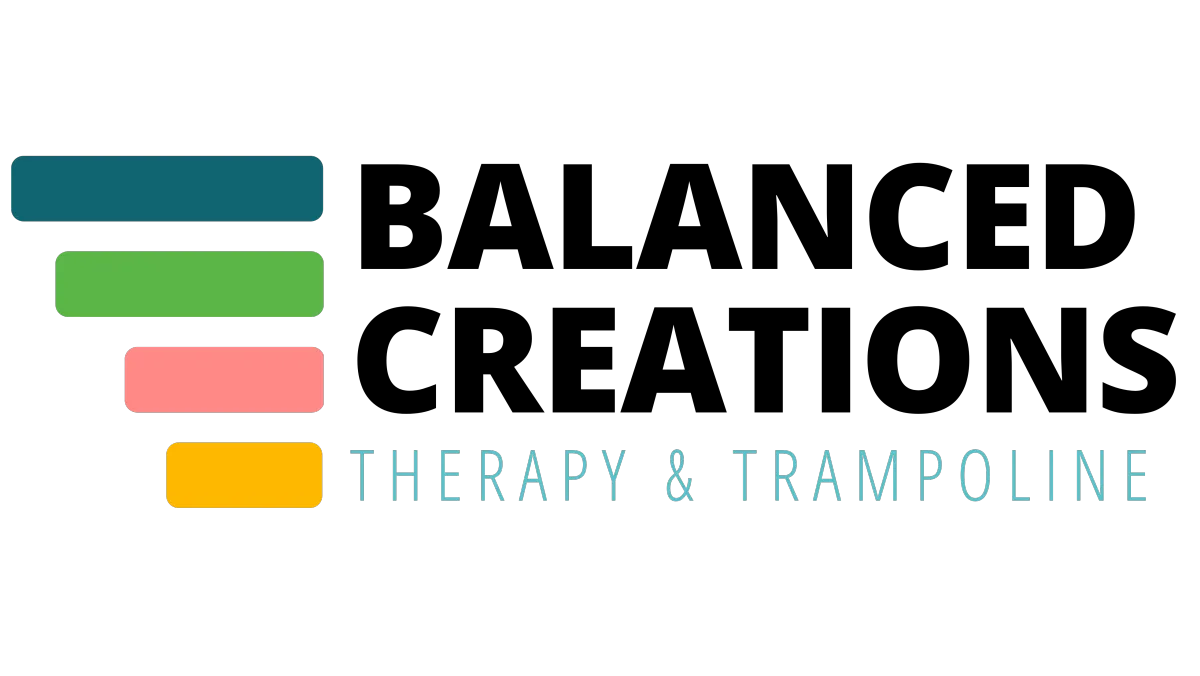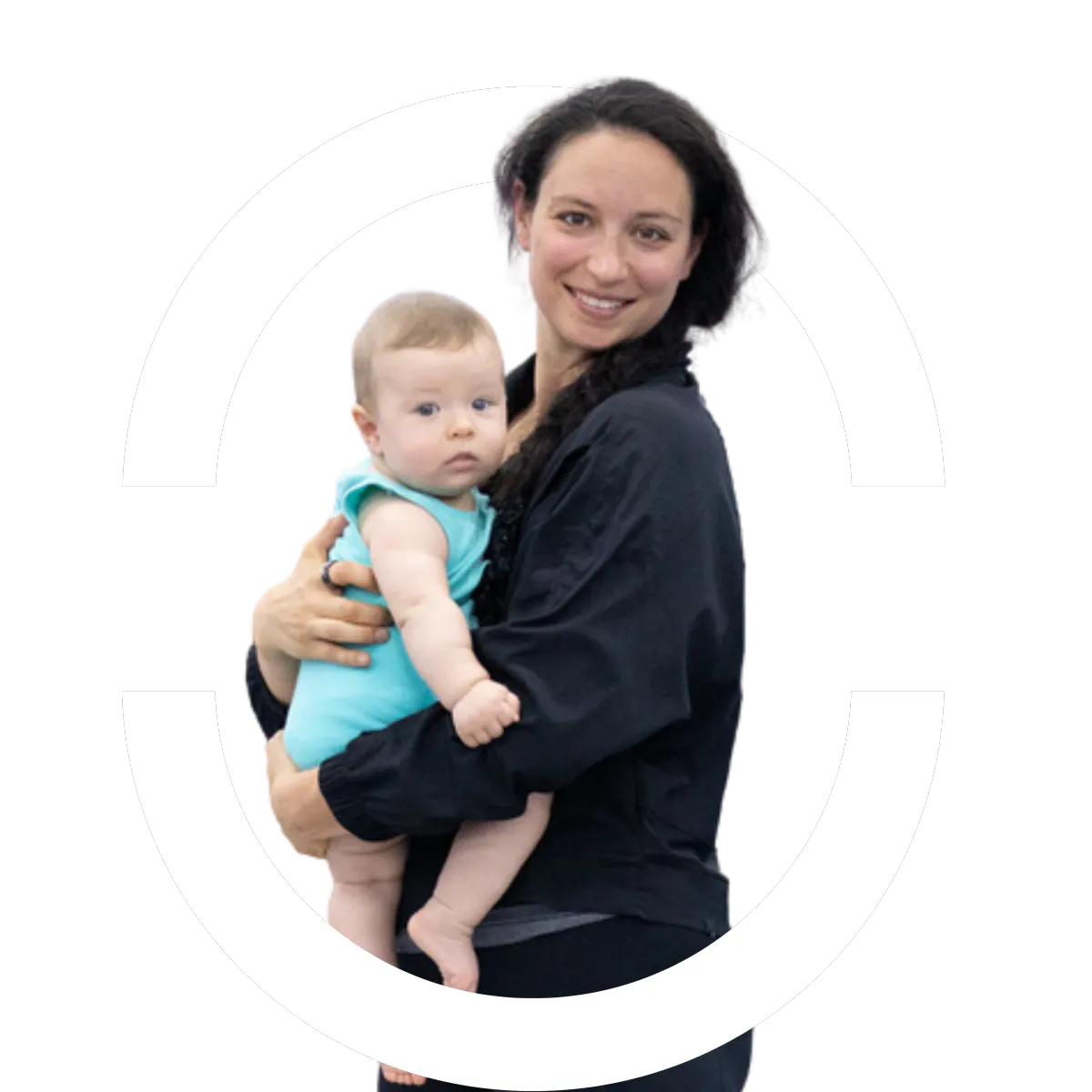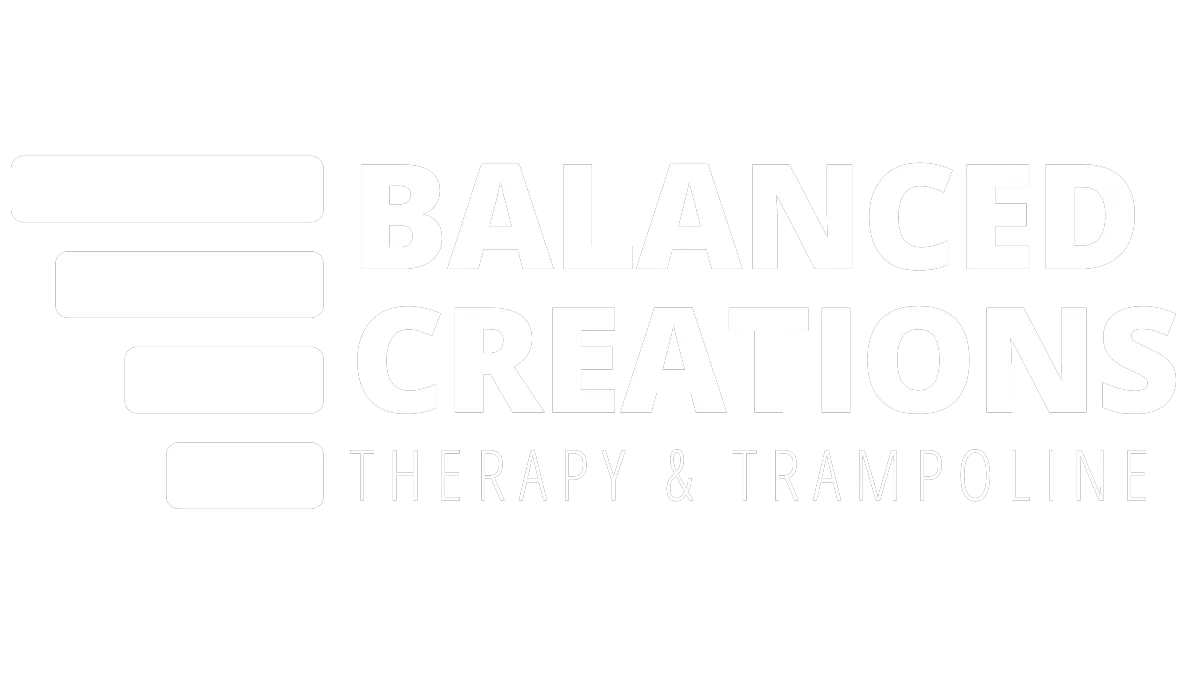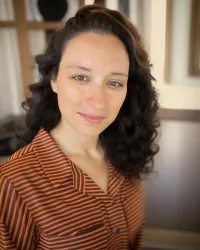JUMP > PLAY > THRIVE.
Building Strength and Independence through Pediatric Therapy in Fort Worth, Texas
Balanced Creations offers pediatric physical therapy, developmental movement education, and adaptive gymnastics in Fort Worth, Aledo, and Parker County. Our play-based, child-led, and neurodiversity-affirming approaches help children in the DFW area build confidence and skills that last a lifetime.


Play-based


Child-led


Neurodiversity-affirming


Therapeutic Trampoline
We create spaces and environments where every child's communication is heard and valued.
We are not just a therapy provider.
Through play-based, child-led, and neurodiversity-affirming practices, including therapeutic trampolining and adaptive gymnastics in the Fort Worth area, we're redefining wellness by helping children achieve meaningful growth through movement and play.
What got me started..
I started treating in a gymnastics environment after noticing a gap in the system—clients were graduating from physical therapy and unable to find ongoing recreational sports to maintain and grow the skills and confidence they had built. Determined to bridge that gap, I founded Balanced Creations Therapy & Trampoline to provide holistic, inclusive care beyond traditional therapy. Since then, I’ve witnessed children not only retain their skills but thrive in ways families never imagined possible, building confidence, independence, and joy through movement and play.
Building Balanced Brains Everyday
Pediatric Physical Therapy Services
Developmental pediatric physical therapy focuses on addressing the unique needs of infants, children, and adolescents who experience delays or challenges in their motor skills and functional movement development. Our physical therapy services are designed to optimize movement patterns, motor skills, and overall physical function, supporting each child’s growth and development in the Fort Worth and surrounding area.
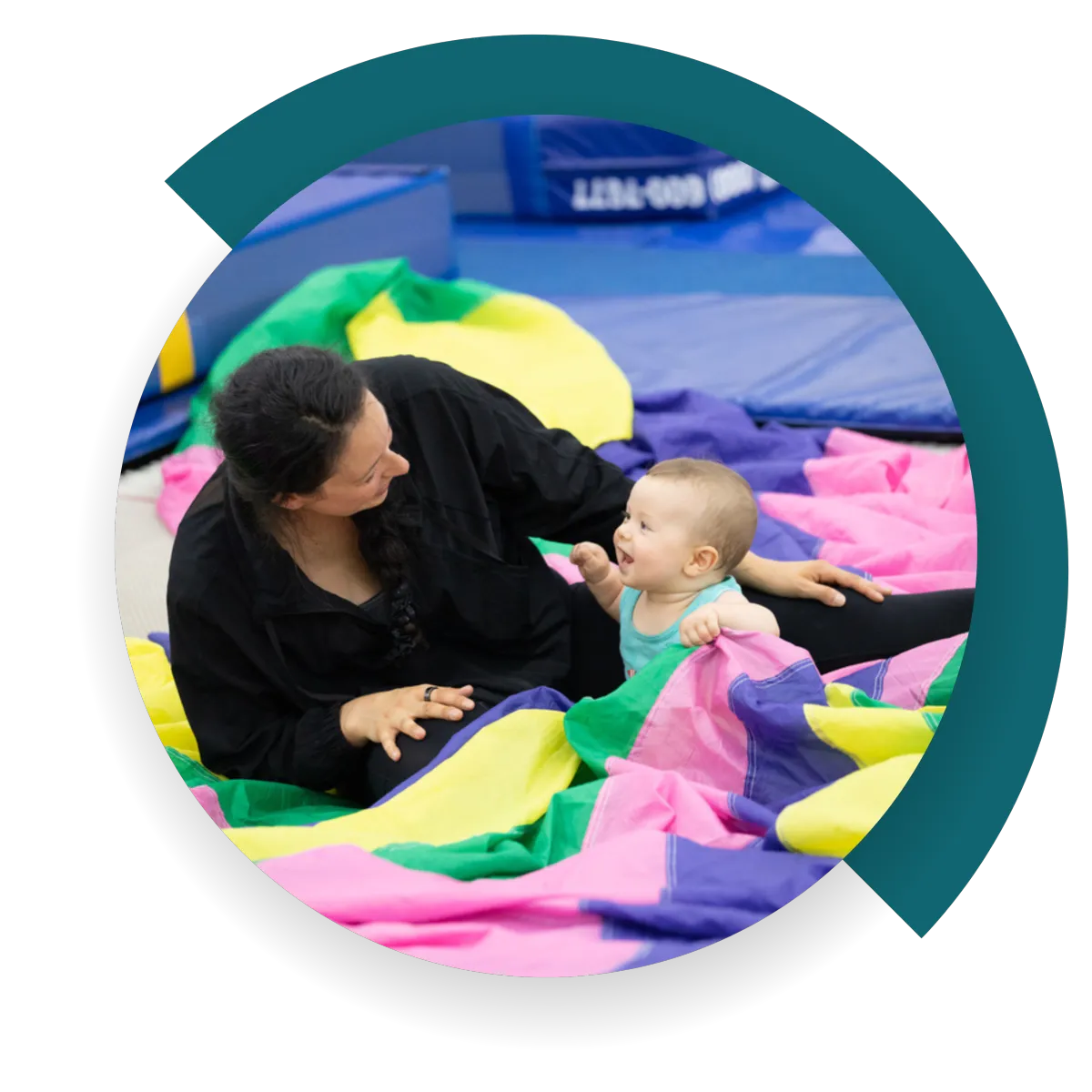
Smiling Upside Down
Adaptive Gymnastics
Adaptive gymnastics involves modifying traditional gymnastics skills, progressions, and equipment to accommodate individuals with physical and cognitive disabilities, as well as neurodivergent children and adults. Our approach ensures full participation in gymnastics activities, fostering inclusivity and skill development for all abilities in Fort Worth and surrounding areas.
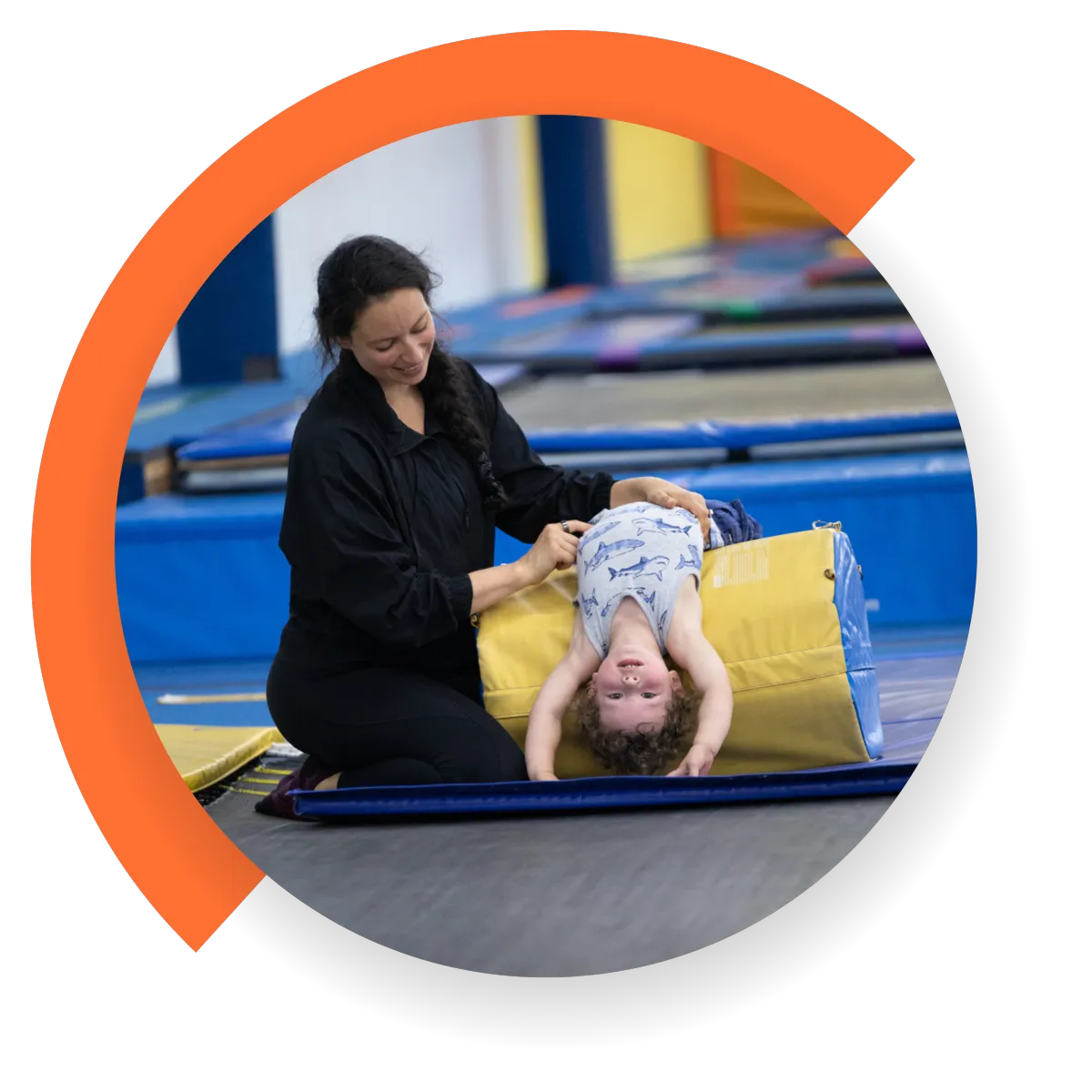
Service Locations
Offering pediatric therapy and adaptive gymnastics in West Fort Worth, Texas. We focus on play-based, child-led, and neurodiversity-affirming care to help every child thrive.
In-Home Service Areas in the North Texas Area Include: Aledo, Annetta, Weatherford, Willow Park, Hudson Oaks, White Settlement
(Please contact us to see if you live within our drive radius)
Pediatric Physical Therapy and Adaptive Gymnastics Classes
Ready to start your child’s wellness journey?
Book your free consultation!
Contact us today to learn more about our pediatric therapy services and adaptive gymnastics classes!
Resources for Parents and Clinicians

The Many Skills Behind Jumping Over a Noodle on the Trampoline
The Many Skills Behind Jumping Over a Noodle on the Trampoline
A Personal Experience
The other day, I was playing with my two boys on the trampoline, and my newly 2-year-old decided he wanted to jump over the noodle—just like his big brother. Watching him use his problem-solving skills was such a proud mom moment.
At first, he stood right next to the noodle, stopped completely, and jumped over. He did it! His little face lit up with pride, and he clapped for himself. But then he decided to challenge himself further. He backed up, bounced a few times, and tried to jump to the noodle and over it.
It was hard. He landed on his belly, his bottom, and sometimes ended up landing on the noodle. He experimented with timing, the number of bounces, the height of his jump, and even where he placed his feet. After many attempts, he finally figured it out. I stayed quiet most of the time, letting him work through it. This experience got me thinking about how many incredible skills a child practices with such a seemingly simple activity—and what types of supports I usually provide during therapeutic trampoline sessions to children with movement challenges.
Why Jumping Over a Noodle Is Harder Than It Looks
Jumping over a noodle on the trampoline, whether stopping and jumping or bouncing first, requires a wide range of skills:
Motor Planning: Your child needs to figure out how to position their body, generate power, and clear the noodle without tripping or falling.
Coordination: They must sync their arms, legs, and core to make the jump fluid.
Balance: Stopping to jump requires stability, while continuous bouncing challenges dynamic balance.
Executive Functioning: Adjusting timing, height, and foot placement takes trial and error, problem-solving, and self-regulation.
Sensory Processing: The trampoline provides proprioceptive input (body awareness) and vestibular input (balance), which helps the child adjust their movements.
How We Adapt and Scaffold in Therapeutic Trampoline Sessions
While my son could figure this out on his own, many kids benefit from additional supports, especially if they’re working on coordination, balance, strength, or executive functioning. In therapeutic trampoline sessions, we break the task into smaller, achievable steps. Here are a few options:
Start Simple: Begin with walking over a stationary noodle while it is laying flat on the trampoline to build confidence.
Add Variety: Wave the noodle like a snake or move it up and down vertically, while the child tries to run from one side of the trampoline to the other without hitting the noodle.
Build Jumping Skills: Introduce jumping without the noodle present on the trampoline.
Pause and Jump: Practice standing still next to the noodle, stabilizing, and then jumping over.
Provide Physical Support: Use a technique called “popping” to help the child feel the motion and generate the power they need to jump.
Combine Skills: Gradually progress to bouncing multiple times before jumping over the noodle, helping them refine timing and rhythm.
Each step can be designed to scaffold the skill in a way that meets the child where they are while gently guiding them to grow and learn.
Why This Matters to Parents and Therapists
This activity may seem simple, but it’s packed with opportunities for kids to develop essential physical, sensory, and cognitive skills—all through play. For parents, it’s a reminder of how much children are learning, even in moments that look like “just fun.” For therapists, it’s a chance to turn these playful challenges into meaningful growth opportunities for children who need extra support.
Ready to try it?!
If you’re a parent looking to help your child build confidence, coordination, and independence through purposeful play, I’d love to help! Email me to book a therapeutic trampoline session.
If you’re a therapist interested in learning more about therapeutic trampoline techniques, Email me to set up a time for us to talk about the online or in-person Therapeutic Trampoline Course and discover how you can incorporate these powerful tools into your practice.
Let’s make every bounce count!
Smiling Upside Down
Sigourney Weathers, PT, DPT
Ready to help your child thrive? Contact us today to schedule a consultation for pediatric physical therapy in Fort Worth, Texas.

Confident Child

Coming Soon.

Supported Mother

Coming Soon.
Hear From Our Clients
We support the whole child.
We try to take a holistic approach to physical therapy and support the whole child and their family to meet them where they are at along their life journey.
